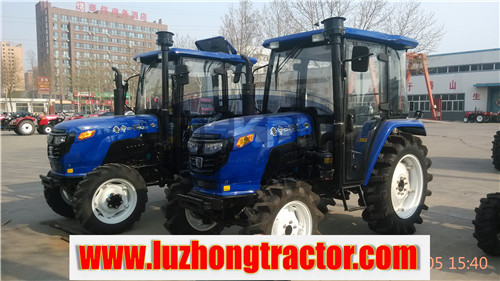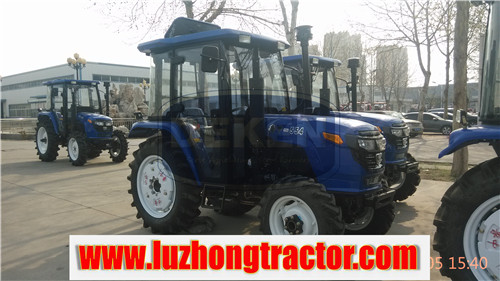Tractor winter maintenance must read
Author:Ricdro
In winter, the concentration of fuel and lubricating oil is high, the fluidity is poor, the cooling water freezes and the road area is snow frozen, which makes it difficult for the tractor to start, lubricate and drive. Therefore, in addition to the required technical maintenance and driving operations, the following technical requirements should be strictly observed.
- Descaling, cleaning, adjusting and lubricating all parts of the tractorbefore entering the winter, and comprehensively check the technical status of the engine. If the valve clearance, fuel injection pressure, etc. do not meet the requirements, it should be adjusted to the specified range. In particular, the oil supply time should not be too late, and it may cause difficulty in starting too late. It is also necessary to carry out a comprehensive inspection and adjustment of the clutches, brakes and operating mechanisms to prevent accidents during road snow and freezing.
- Replace fuel and lubricant with winter oil. It should be replaced with diesel fuel with a freezing point lower than the local temperature of 5-10 °C. When refueling, it must be strictly filtered. The oil in the oil pan should be replaced with No. 8 oil, and the gear oil in the gearbox and rear axle should be replaced with No. 20 gear oil. It is forbidden that the lubricating oil in the governor housing exceeds the specified oil level to prevent the flying.
- Adjust the specific gravity of the battery electrolyte. The specific gravity of the electrolyte was adjusted from 1.25-1.26 for summer use to 1.28-1.29. In the alpine region, it can be adjusted to 1.30-1.13l. Thorough inspection and maintenance of the electric starting system.
- Warm the water to warm the body before starting the engine. The method of heating the water while discharging water is used until the body drain valve flows out of the warm water. Close the drain valve and use the crank to turn the crankshaft for dozens of turns to fill all parts with oil and get lubrication. It is strictly forbidden to use an open flame to bake the engine and start without cooling water. After the engine is started, it is necessary to extend the preheating time appropriately, and add a thermal insulation curtain in front of the radiator to ensure that the working water temperature reaches 80 °C or above. Long-term work at low temperatures is not allowed.
- After parking at night, when the water temperature drops to 50 °C, open the drain valve, drain the cooling water, and use the crank to shake the crankshaft several times until the water does not flow out. Do not close the drain switch. Some of the robots save trouble, and when they open the water discharge switch, they leave the locomotive, often causing an accident that the dirty water is blocked and the cooling water is not released and the body is frozen. There are also some parking stalls that release water, causing the engine to cool rapidly and the body to burst.


- Strictly follow the operating procedures. Anti-skid items such as snow chains and triangular pads should be prepared before leaving the car. When encountering frosty roads, drive slowly. When going uphill, you should use the gear that can go up one time to avoid shifting in the middle. If there is snow, you should pay attention to the boundary of the curb and you should not risk driving.


